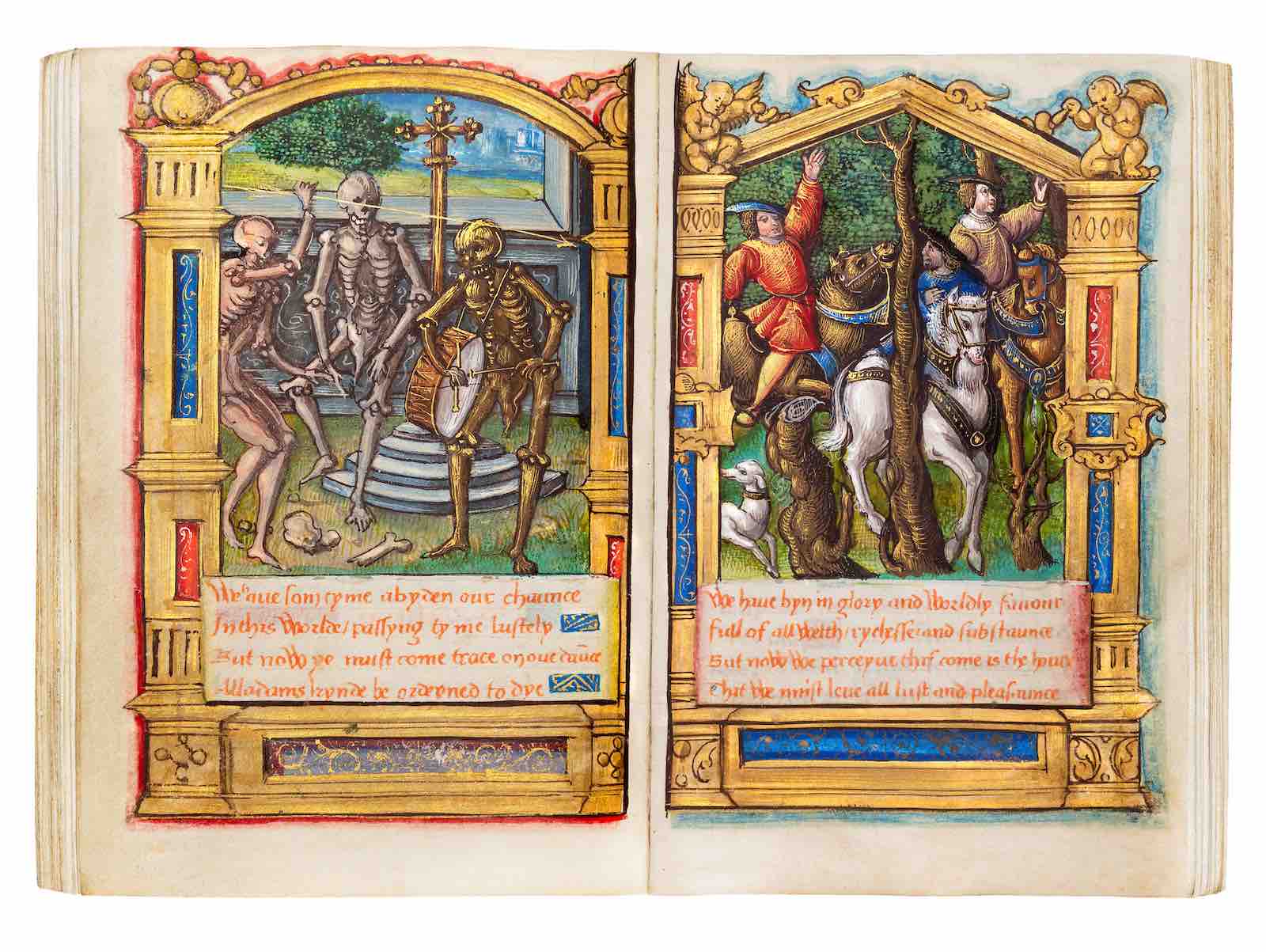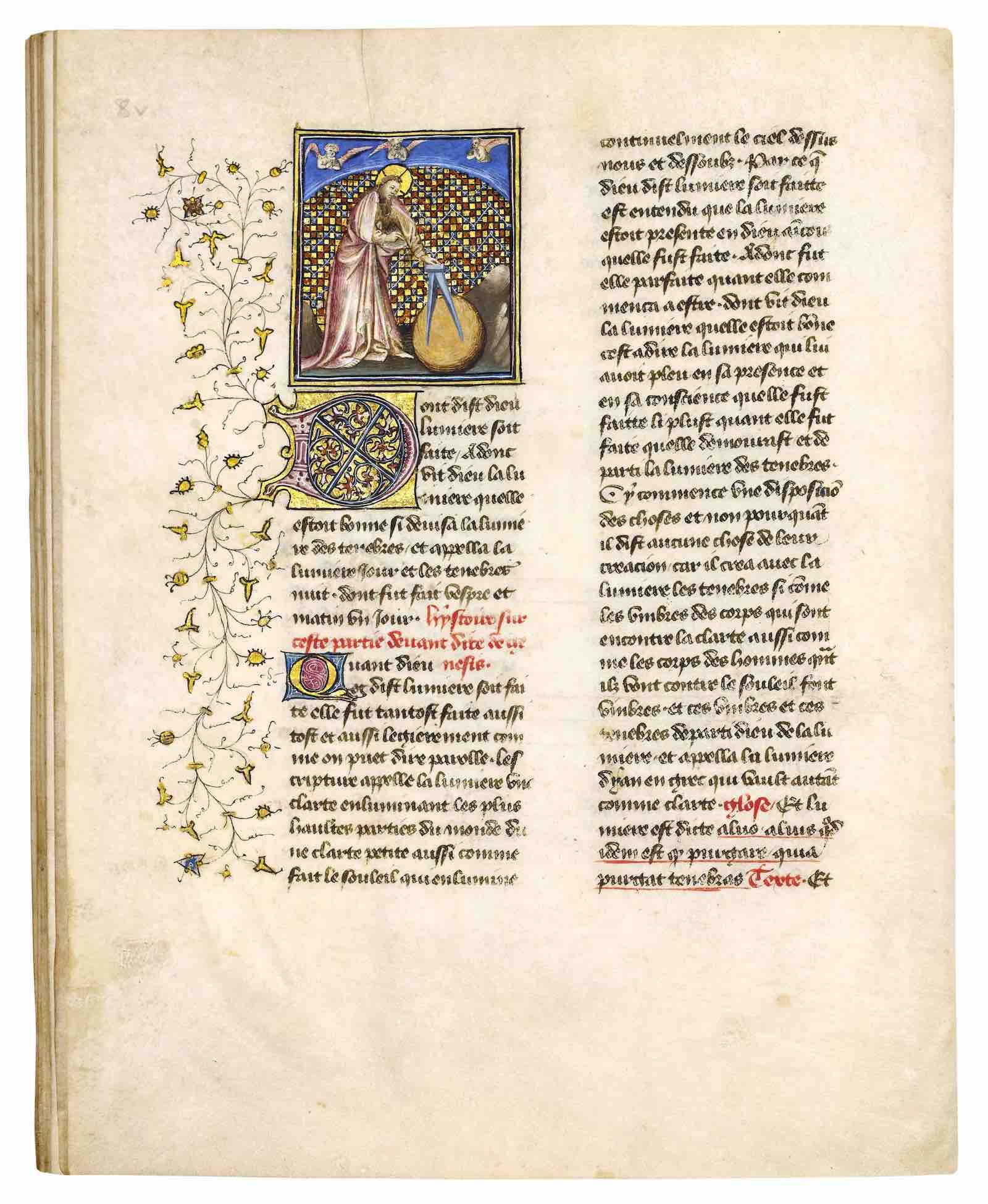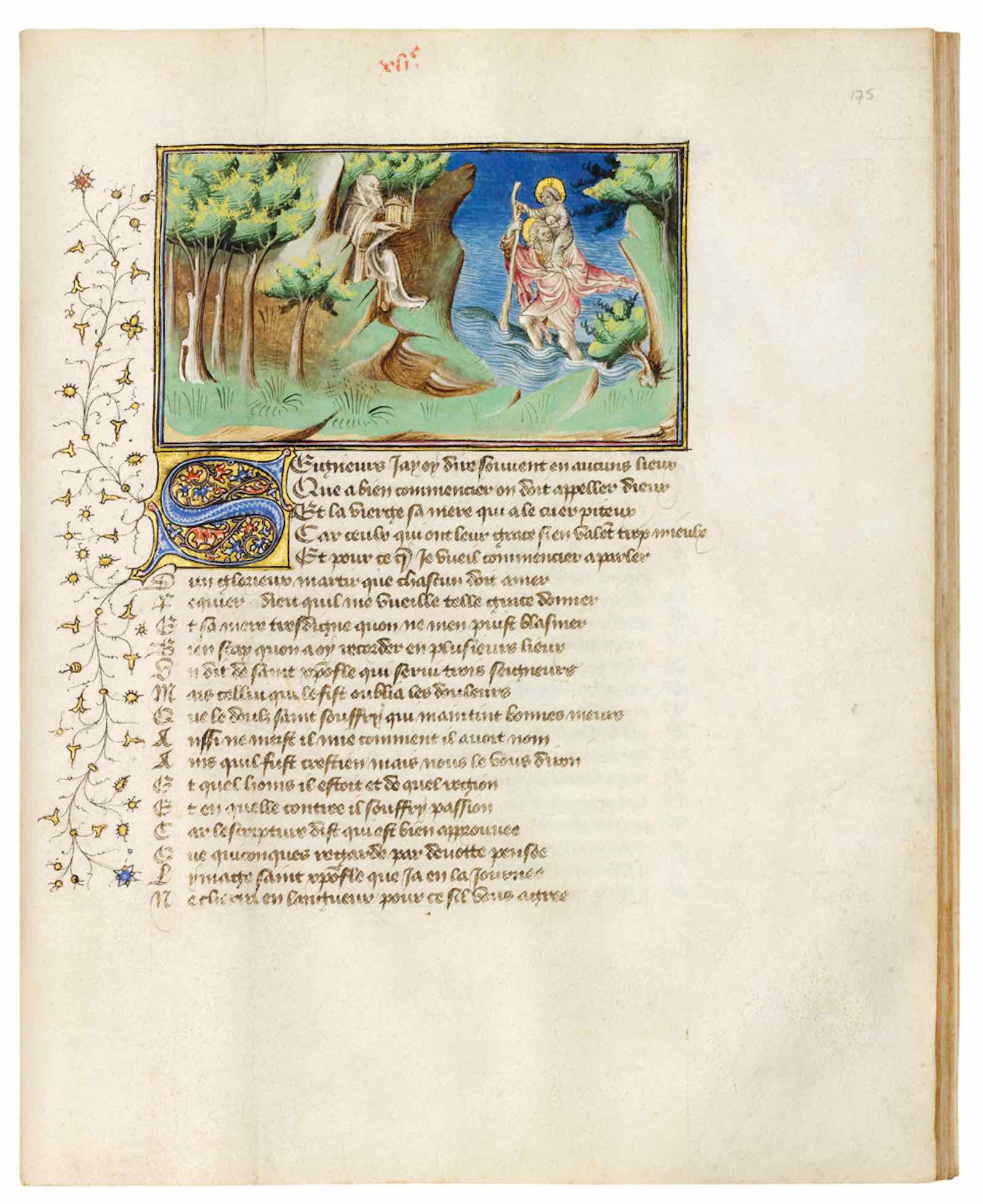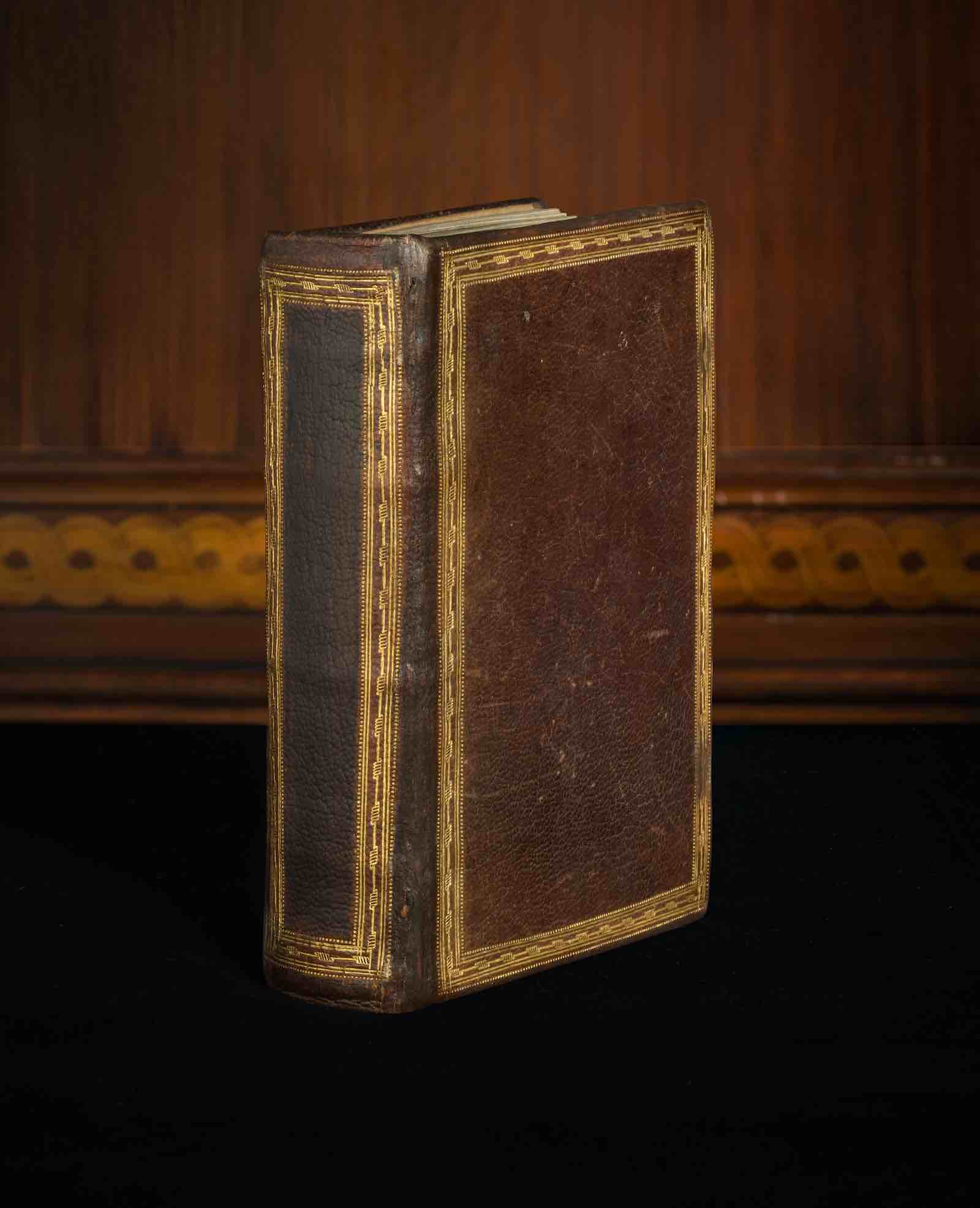The second highlight comes from the early 15th century, the pinnacle of the International Style in France. The Bible Historiale, one of the chief works of medieval literature, was created to tell the story of the Bible entertainingly for laypeople. It was by far the most popular interpretation of the Bible in France. Among the extant copies of the Bible Historiale, this manuscript is the only one that includes the book of Genesis. Equally remarkable is the fact that an interpretation of Boccaccio’s Patient Griselda has been added.
The manuscript was illuminated in the workshop of the Master of the Berry Apocalypse, who specialised in manuscripts with large illustration cycles. His style, which is inspired by the Boucicaut workshop, shows a graphic approach, with scant colours, giving the impression of a coloured grisaille. This fine volume boasts approximately 80 large, illuminated initials in burnished gold and colours, one large miniature of St. Christopher and Christ, and 77 column width miniatures in elegant demi-grisaille.
Finally, with its 63 opulent miniatures, is an unusually rich and resourceful manuscript by the Master of François de Rohan, a well-regarded artist at the court of King Francis I. This Book of Hours was made for the English market, as is demonstrated by the liturgical use of Salisbury (Sarum), the British Saints in the suffrages, and the English rhymes accompanying the miniatures. Such a copiously illustrated manuscript, made by an esteemed court painter, was probably meant for a high-ranking member of the English nobility, perhaps someone staying temporarily at the royal court in Paris.
Bible Historiale Among Religious Highlights at TEFAF 2023
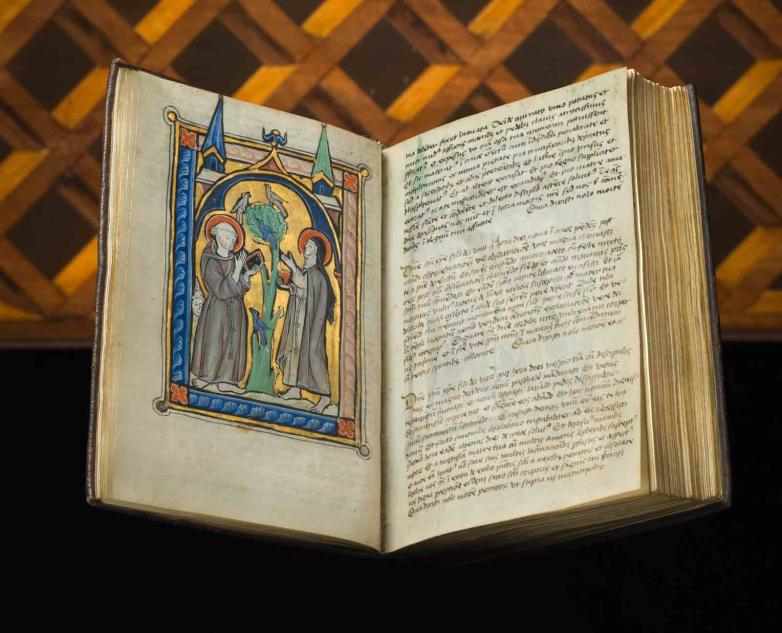
Psalter, use of Ghent, manuscript in Latin on vellum, illuminated in the workshop of the Franciscan Master of Bruges. Flanders, Bruges, c. 1255-1260.
Dr. Jörn Günther Rare Books is returning to TEFAF Maastricht in 2023 (9-19 March) with a display of museum-quality manuscripts, miniatures, and early printed books from the Middle Ages and the Renaissance. This year’s highlights are a Franciscan devotional book shining with gold, a narrative version of the Bible filled with pictures that tell its stories in delicate demi-grisaille, and a late personal prayer book bursting with colour and likely made for use by an English patron.
The first highlight is a small devotional psalter, produced in Bruges for use in nearby Ghent. This psalter was inspired by the fresh enthusiasm brought about by the new Franciscan order that settled in Bruges in 1221 and in Ghent in 1225 (when Francis was still alive). Franciscan friars were often religious instructors for pious women, namely members of Beguine communities. The book at hand could have served as a prayer book for a Beguine. St. Francis is represented together with St. Clare on the first miniature, which could point to the date of accomplishment, since Clare was canonized in 1255.
It is decorated with ten lively, rural labours of the months in the calendar, five marvellous, full-page miniatures with abundant use of gold leaf and nine large, historiated initials. The illuminator’s hand has already been verified in five other psalter manuscripts made for Franciscan circles and since the Franciscan order is of great importance in all six books, the artist has been dubbed ‘the Franciscan Master’.




